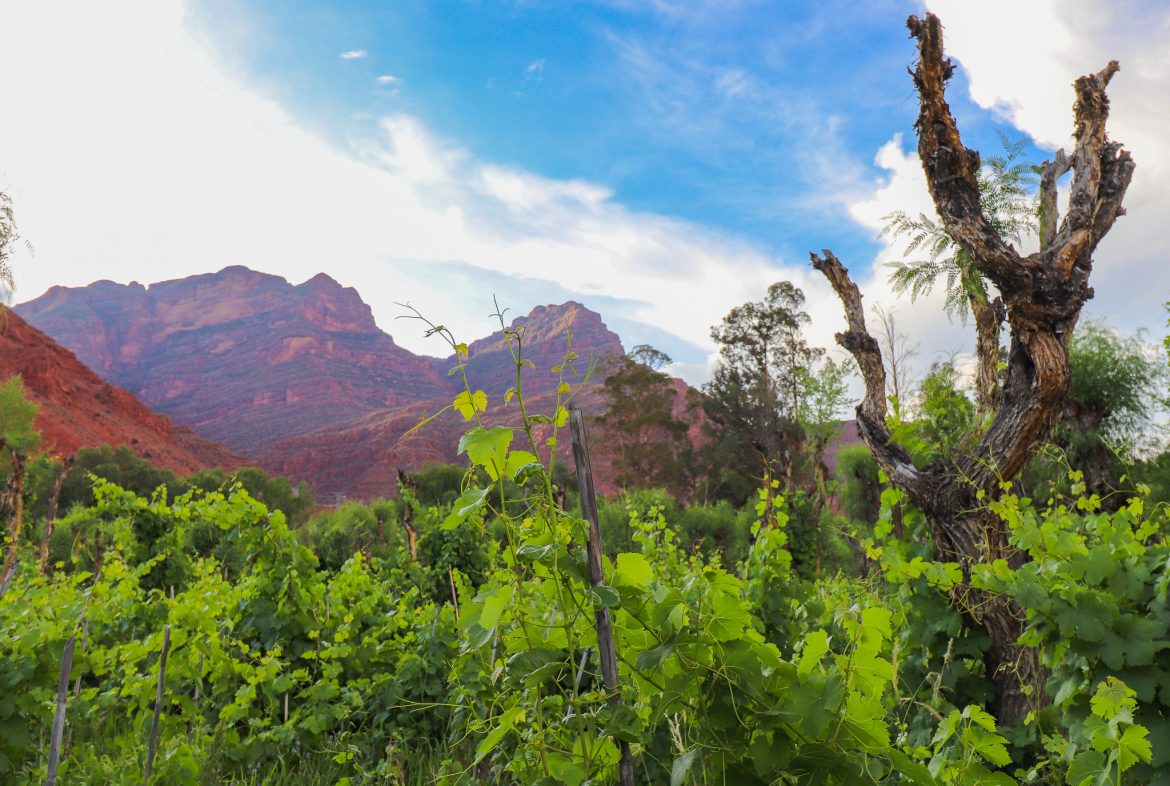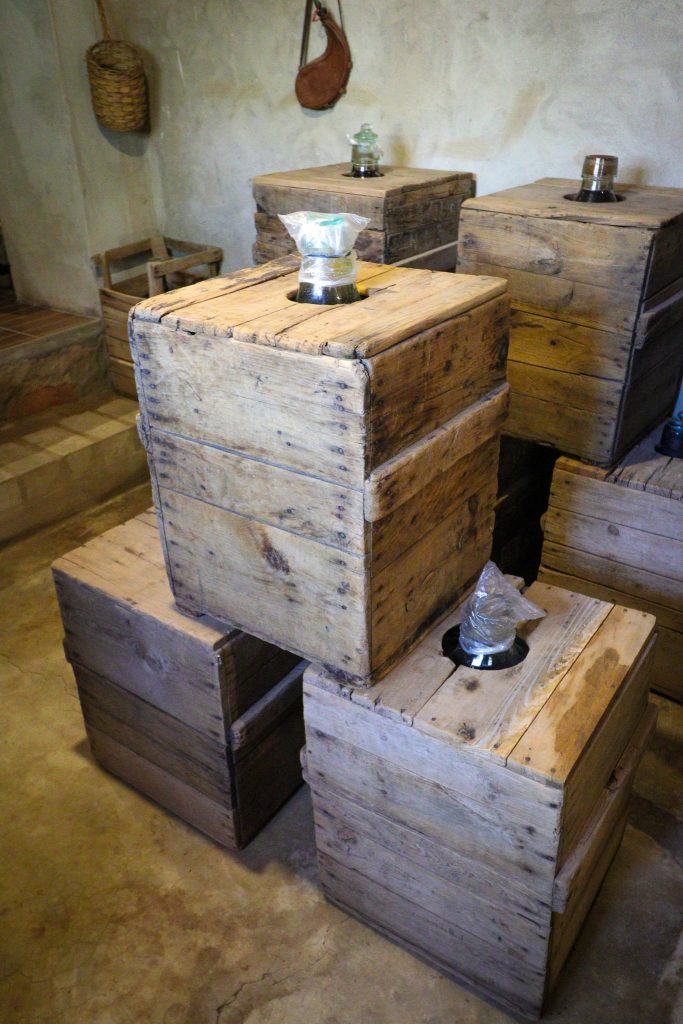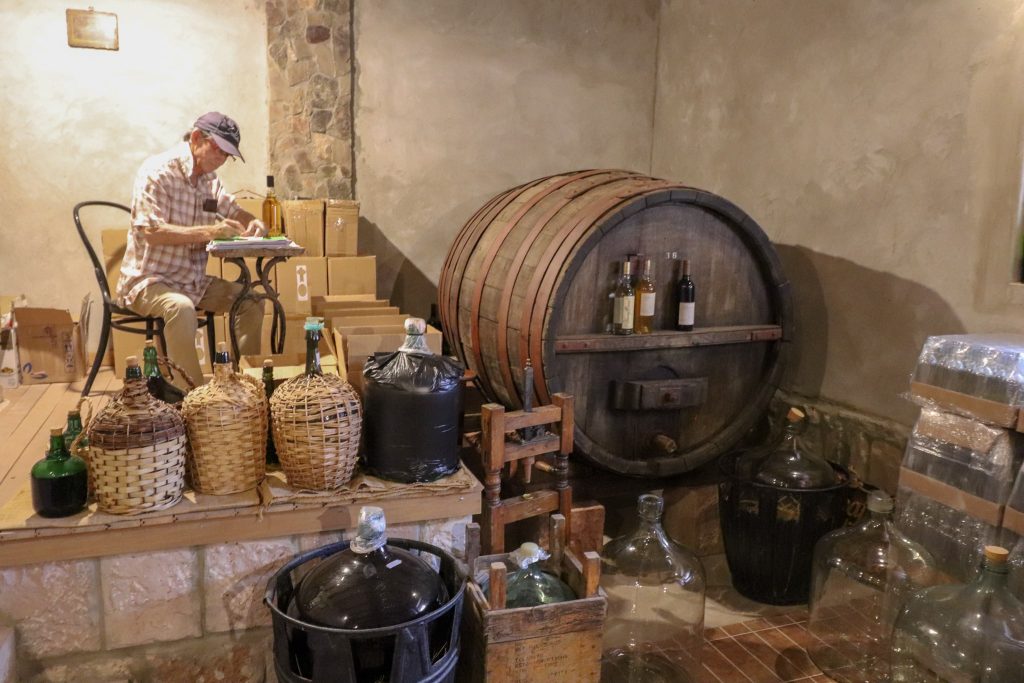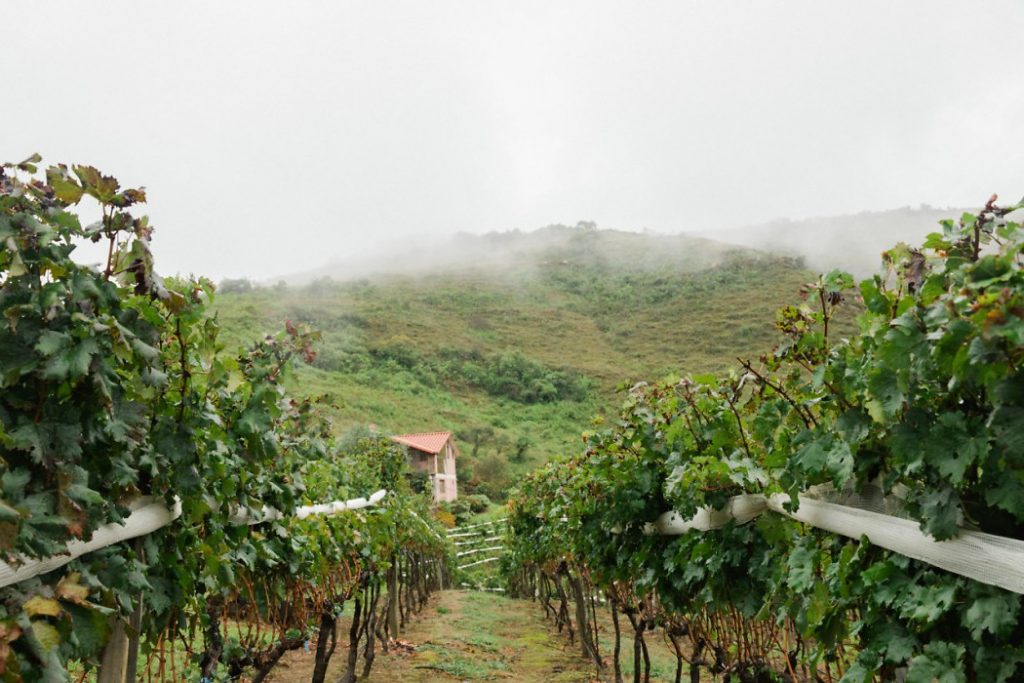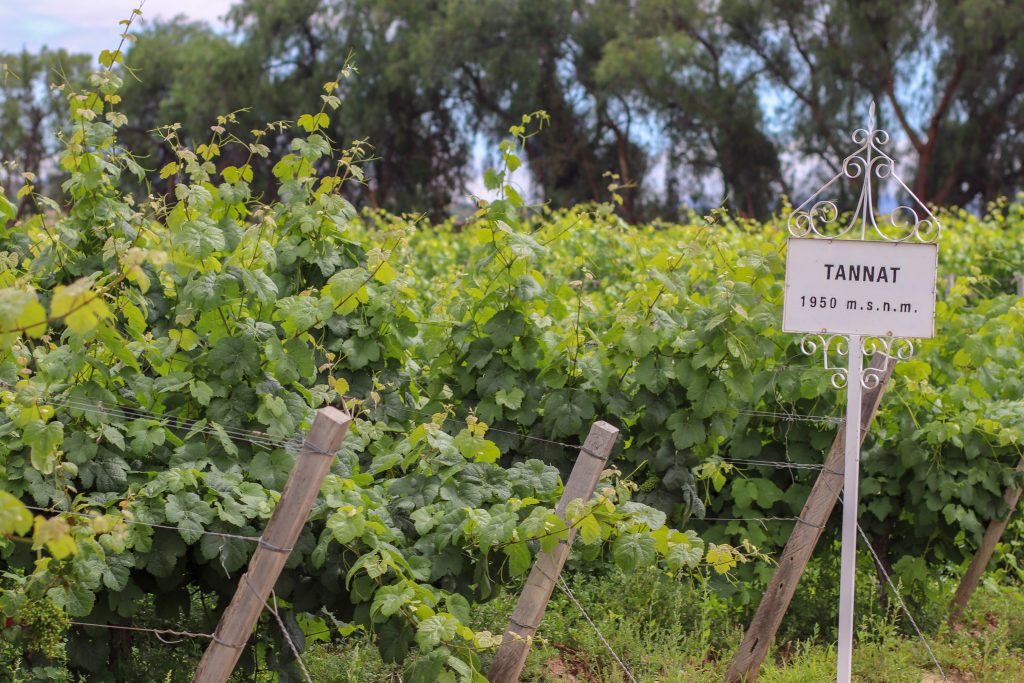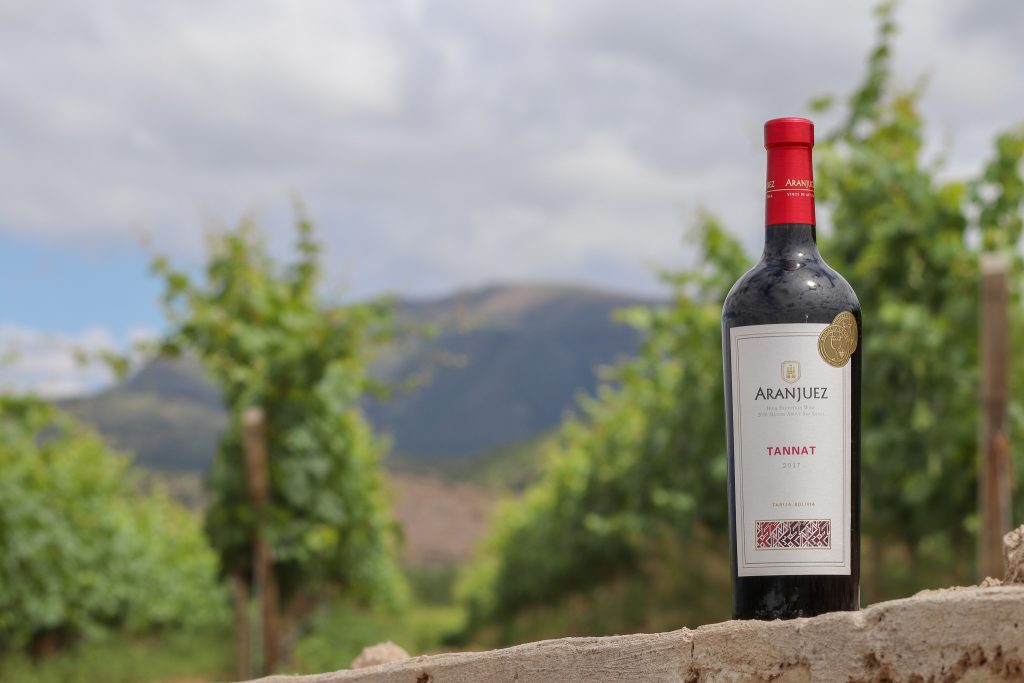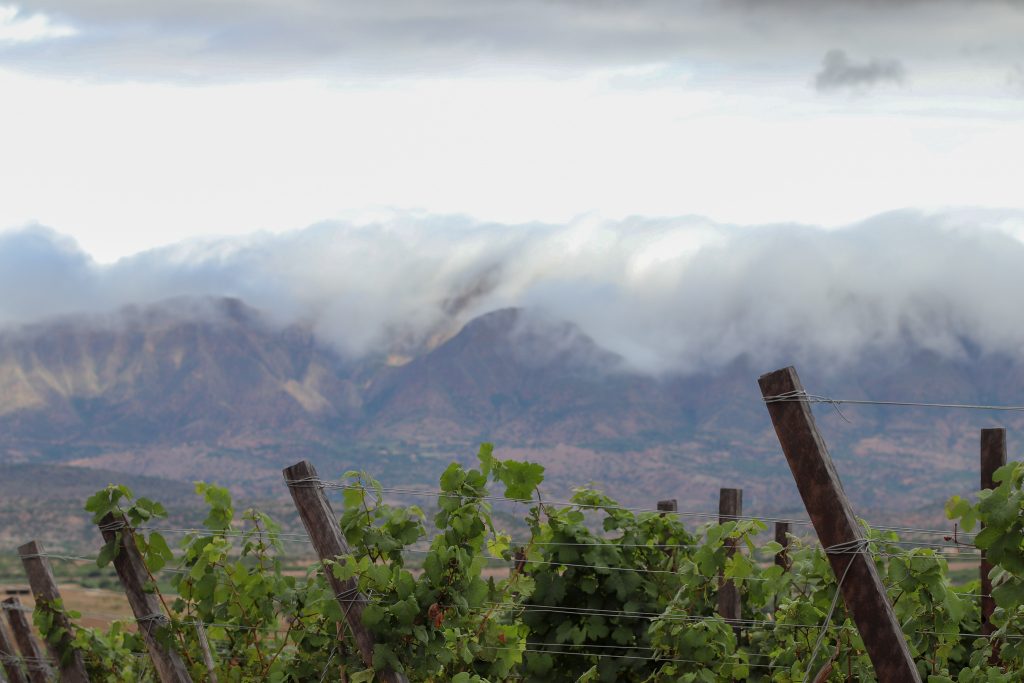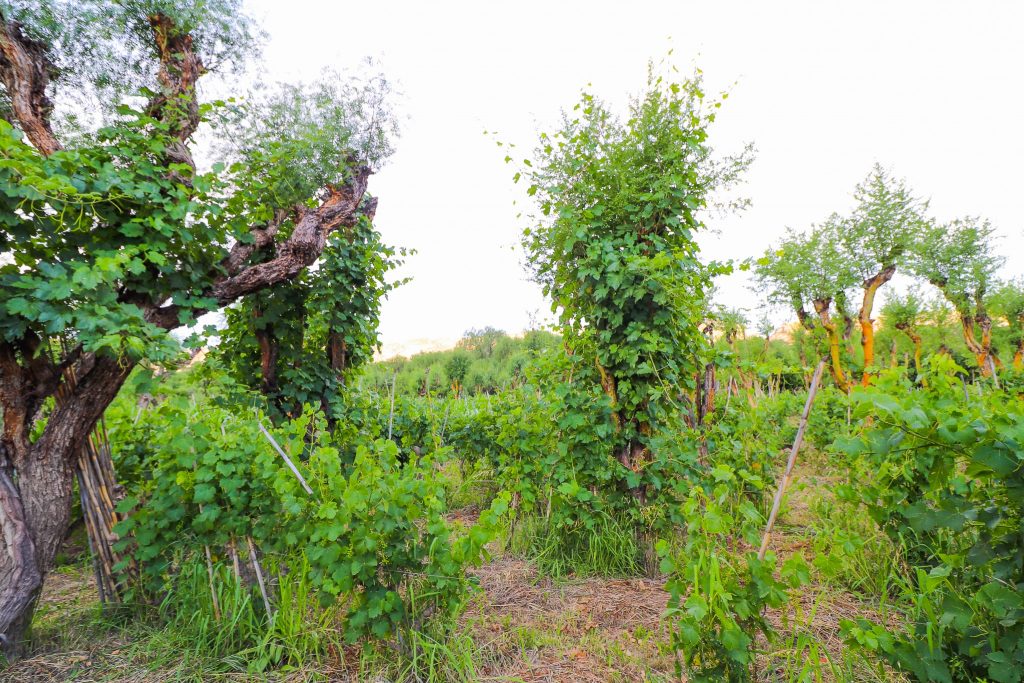Bolivia’s wine history began nearly 500 years ago when the Spanish pushed to expand their empire into the New World. They arrived in the territory that is now Bolivia from the west through Peru, and from the east through Argentina. Wherever the Spanish settled, they attempted to plant grapevines – including Bolivia. Although there were some early challenges, there’s a thriving production of wine in Bolivia today throughout the wine valleys of Tarija, Cinti and Santa Cruz. Sommelier Darren Armstrong takes a look through the history of Bolivian wine and which grape varieties in Bolivia have triumphed.
The first vineyards in Bolivia & Criolla roots
Bolivia provided many challenges to the first vignerons, the most significant of which is that the country lies entirely within tropical latitudes. Grapevines, a Mediterranean plant, do not produce good fruit when grown in tropical environments, but through trial and error the Spanish found success by planting vines in high altitude valleys.
Above 1,500 meters elevation (4,921 feet) colonists were able to find climates that were more suitable for the vine, and here they planted Criolla varieties – grapevines of Negra Criolla (aka. Mission, País, Criolla Chica) and Muscat of Alexandria. As the name implies, Mission grapes travelled throughout North and South America with the Spanish Missionaries. This black grape variety has hardy vines that can adapt well to a wide variety of environments. Muscat of Alexandria was also a favourite of Spaniards for its intensely aromatic fruit, high yields and resilience to pests and diseases.
Coming of age: the modern wine industry in Bolivia
Modern day wine production in Bolivia is changing by the season, but many vineyards still look much like they did centuries ago. Bolivia is home to some extremely old vines, especially in the traditional growing region of the Cinti Valley. Winemaking and viticulture have taken large steps forward in the last several decades, with modern winemaking equipment and knowledge first arriving to the country in the 1960s and 1970s.
Most of Bolivia’s 3,000 hectares of vineyards (7,500 acres) is planted with Muscat of Alexandria, though relatively few Muscat grapes are made into table wines. Most of this production is made into wine that will be later distilled into singani, Bolivia’s traditional Muscat of Alexandria brandy. This aromatic, 40% spirit represents the aromatic intensity of the Muscat grape and is typically enjoyed mixed with ginger ale or local fruit juices.
Since the 1990s, Bolivian winemakers have been experimenting with planting different grape varieties, focusing their attention toward red grape varietals that could be well suited to the high altitude terroir. With vineyards at elevations ranging from 1,500-2,800 meters above sea level (4921-9,186 feet), thin-skinned varietals typically can’t handle the increased UV exposure. Success has been found with lesser-known French and Spanish varietals, as well as some modern crossings. Though new plantings are gaining a lot of attention, traditional varietals like those brought by the Spanish exhibit lots of potential, but winemakers still have some work to do in order to create styles that will be appreciated internationally.
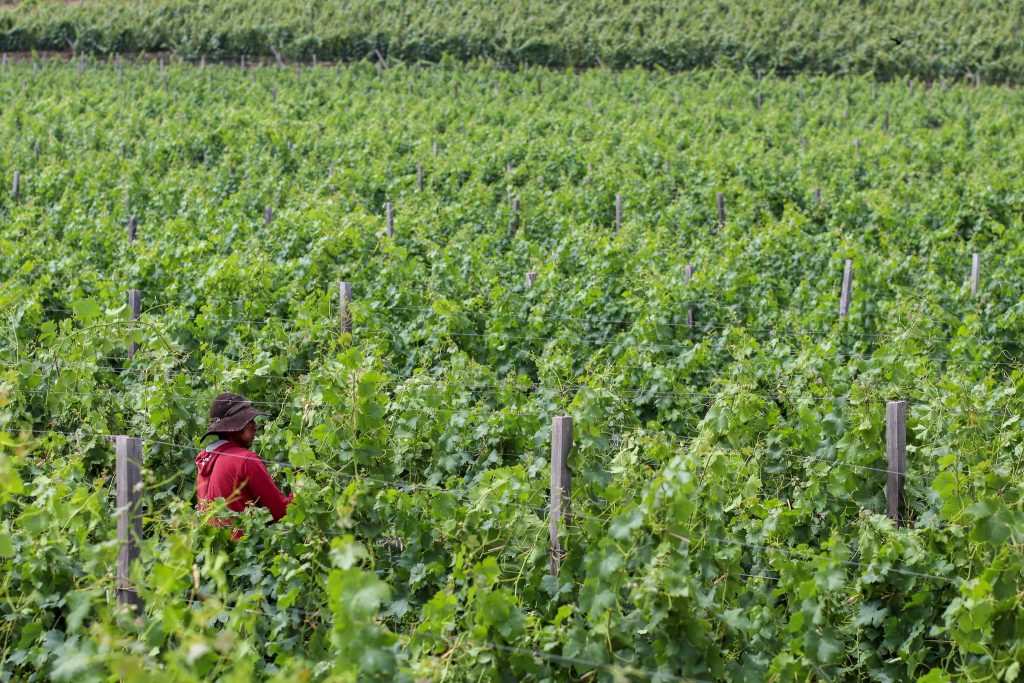
Top wine varieties from Bolivia to try
Muscat of Alexandria / Moscatel de Alejandría
The Spanish hold this grape in high regard for its expressive nature, showing off intense ripe fruit aromas accompanied by delicate orange blossom and jasmine notes. This varietal is resilient, productive, and adaptable, which made it perfect for colonizing the New World. Bolivia still dedicates roughly 80% of its vineyards to this varietal to produce Singani, an aromatic, unaged brandy defined by altitude and tradition.
Traditionally table wines from Muscat of Alexandria are made with varying degrees of sweetness, but more producers are shifting their focus to dry styles. The intensely sunny days and cool mountain nights allow the grapes to achieve ripeness while maintaining acidity, creating wines with great aromatic intensity that are fresh and crisp.
The Cinti Valley has a long connection with the mining operations in Bolivia. In the 16th century, the Spanish discovered that the Cerro Rico, a large mountain reaching 4,815 meters high (15,800 feet), contained a massive deposit of silver. This mountain essentially bankrolled the Spanish empire for centuries and contributed to the growth of what became the town of Potosí.
As mining operations changed from mechanical methods to chemical methods, the Spaniards brought in large quantities of acids that were transported in glass vessels held in wooden boxes.
These vessels, called damajuanas (daw-ma-hua-nuhs), were never to be returned to Europe, so they eventually were used to ferment or rest wines and age singani. Some of the small production winemakers in the Cinti Valley still use these vessels instead of buying expensive stainless steel or using food grade plastic containers, while being able to maintain a piece of working history.
Recommended Bolivian wine to try: Moscatel de Alejandría, San Francisco de la Horca, Cinti Valley
Fourth generation winemaker Marcelo Vacaflores was taught early on to appreciate the abundance of the valley he calls home. His family produces a wide variety of Muscat wines including late harvest wines and dessert wines (fortified with their own singani).

Their dry Muscat of Alexandria is not to be missed: ripe citrus and tropical aromas give the impression of sweetness, but the wine is bone dry, crisp, and elegant with lots of orange blossom and a touch of jasmine.
Torrontés
Grapevines did not exist in South America until Europeans brought them during the exploration and colonization of the continent centuries ago. Vitis vinifera, the vines most commonly used to make fine wine are native to the Mediterranean, so technically there are no native South American vines. That being said, Torrontés is about the closest we can get to a native South American vine.
Torrontés was born in Argentina out of a crossing between two Criolla vines brought by the Spanish – Muscat of Alexandria and Criolla Chica vines. Torrontés is an aromatic, resilient, and productive variety that is well adapted to the high altitude growing regions of Argentina, so it was only natural that these grapes would make their way to Bolivia next door. Like Muscat of Alexandria, Torrontés shows lots of floral and fruit character like rose, geranium, lemon peel, ripe apricot, and tropical fruit. In high altitude regions like Salta, Argentina and Tarija or Samaipata, Bolivia, Torrontés is able to maintain higher levels of acidity providing a fresh balance to its intense bouquet. Without that crispness, Torrontés wines can feel heavy, oily, and even soapy, making terroir key to creating balanced wines.
Recommended Bolivian wine to try: Torrontés 1750, Bodega Uvairenda, Samaipata
Samaipata, Bolivia has roughly 450 years of winemaking history. As the Spanish pushed the frontier further and further into what is now Bolivia, they fought hard for these mountain valleys where grapevines could be planted. They first planted vines in the tropical lowlands near Santa Cruz, but grapes suitable for winemaking were impossible to grow. In Samaipata, at an elevation of 1,750 meters (5,749 feet), vines could find the right balance of ripeness and acidity. Here, and throughout the mountain valleys near Santa Cruz vineyards provided wine for local consumption and sacramental use for the Catholic Church. In modern times, Samaipata is seeing a small revolution of boutique grape growers and winemakers focused on high quality production. Bodega Uvairenda was founded in the early 2000s to revive the winemaking history of the Santa Cruz Valleys. They focus on local varietals like Torrontés and Pedro Giménez, as well as French varietals like Cabernet, Syrah, and Tannat.

The 1750 Torrontés from Bodega Uvairenda is made with a blend of 15% Sauvignon Blanc, Chardonnay, and Pedro Giménez, all providing structure and elegance for this aromatic varietal. The wine is bone-dry, with bright acid, silky texture, and lots of intense fruit and floral aromas. Pineapple, ripe apricot, peach, and rose jump out of the glass, making this wine a perfect match for exotic international cuisine like Indian and Thai dishes, or even with Mexican food (think tacos al pastor). The aromas are intense, but with elegance in the palate these aromas are not overwhelming or cloying. This Torrontés is great with fatty white fish, white meats served with chutney, or just enjoyed on a sun-drenched patio with light snacks.
Tannat
The first vines of Tannat were planted in Tarija, Bolivia, in 1999 in one of the experimental vineyards of Bodega Aranjuez. The Castellanos family, owners of Aranjuez, recognized that the Noble French varietals that they had planted were producing good wine, but they were not very well suited to the unique terroir of the valley. The semi-desert climate, high altitude (2,000m/6,561ft), and tropical latitude (21.5ºS) of Tarija all contribute to a challenging growing environment, especially for delicate varietals. Though Cabernet Sauvignon, Merlot and Chardonnay could all survive and bear fruit, they didn’t yield wines with character. The family planted a variety of Spanish and French varietals, but the one that produced the most exciting results was a little-known varietal from the Southwest of France (and Uruguay): Tannat.
Tannat is known for being thick-skinned and extremely high in tannins and other polyphenols, which create intense, bold, inky-black wines. These characteristics make Tannat extremely well suited for Bolivia’s high altitude vineyards. At these altitudes and latitudes, there is less atmosphere to filter out ultraviolet radiation, leading to upwards of 30% more UV exposure. Humans will sunburn faster with this extra dose of UV rays, and just as we would need to apply extra sunscreen to prevent damage to our skin, grapevines also need protection. In order to protect the seeds in the grapes from being damaged the vines produce grapes with higher levels of polyphenols like tannins, resveratrol, and anthocyanins. Though lighter, thin-skinned grapes like Pinot Noir also produce higher levels of polyphenols in these conditions, they are not able to cope as well with the stress.
Tannat is known for being highly tannic, which is why Tannat wines are often almost undrinkable in their youth. Madiran, the traditional home of Tannat, is known for producing wines that can age decades, but these wines are hard to sell in the modern wine market. Consumers are typically buying wines that they will consume within hours, not years, so producers have had to work on hard on creating youthful wines that are approachable and drinkable.
Tannat has been adapting extremely well to Tarija’s combination of warm weather, high UV exposure, and warm summer rains, all thanks to that beautiful, dark, thick grape skin. The intense sun allows for ripe, dark fruit flavours and aromas, while the cool, high-altitude mountain nights allow the grapes to maintain high levels of acidity. This combination has allowed for Bolivian winemakers to create full-bodied, ripe, juicy wines balanced with fresh acidity and pleasant, ripe tannins that don’t tear up your palate.
Recommended Bolivian wines to try:
Tannat Bodega Aranjuez, Tarija
This 100% varietal Tannat wine balances rich, ripe, dark fruits with classic earthy Tannat aromas like leather and tobacco. This wine was aged for only 6 months in new French oak, giving it a touch of vanilla and spice, accenting the varietal character without covering it up. This Tannat is big and bold with plenty of ripe tannins, but the fruit flavours and balancing acidity keep the wine pleasant on the palate. This wine is a great match for rich winter stews, roasted lamb, grilled beef, or just enjoyed on its own.
Bodega Aranjuez Duo Tinto, Tannat/Merlot, Tarija
Tannat wines are generally powerful and full-bodied with lots of dark fruits and earthy, savoury flavours. To balance out this intensity, Aranjuez blends in 50% Merlot adding notes of chocolate and plum while softening the tannin structure. This creates an everyday drinker that shows off the character of Tannat without overwhelming the palate. This blend handles a wide variety of dishes when pairing, including Mexican Mole, Korean barbecue, or grilled sausages (or a good choripán for those in the know!) This wine is a great way for less experienced wine drinkers to get to try Tannat while still having a taste of something familiar and friendly.
Pedro Giménez
Fans of Sherry wines will recognize the name of this grape, and true fanatics will wonder why Pedro Giménez (pay-droh hee-MEH-nez) is spelled with a G instead of an X. This grape variety is not actually related to Pedro Ximénez, the thin-skinned grape of Sherry fame that is often dried to create the stickiest and sweetest dessert wines. This variety is actually more similar in style and character to that of Torrontés or other local Criolla varietals in Argentina or Bolivia. The vine is resilient, produces a strong yield, and makes wines that are expressive with intense tropical fruit, herbal, and floral character. Long ago this varietal was one of the most widely planted white grapes in South America with plantings in Chile, Argentina, and Bolivia. Many larger producers have ignored this grape, but it is seeing a resurgence as smaller producers are looking for wines of character representing local tradition.
Recommended Bolivian wine to try: 2017 Pedro Giménez 1750, Bodega Uvairenda, Samaipata
Winemaker and founder Francisco Roig, is passionate about classic French wines and varietals, but he is also a big supporter of local tradition and style. He believes that if local Criolla varietals are treated with the same love and care as classic French varietals they will make high-quality wines that share the local flavour. He loves the big aromatic punch of this varietal and makes a dry white wine with plenty of tropical fruit, delicate white flowers, and even fresh green herbs.
This wine is 100% Pedro Giménez, fermented and aged in stainless steel, so it is crisp and light, but with more body than their Torrontés. When asked why he decided to work with this lesser known varietal, Francisco says: “Pedro Giménez is huge in aromas and flavour, totally terpene-rich. I have been working with micro-vinifications of Torrontés, Muscat of Alexandria, and Pedro Giménez for more than 10 years. I love them all in different ways”. This wine really shows off the unique terroir of Samaipata, which has a relatively cool climate, but at elevations between 1,750-2,100 meters (5,749-6,889 feet) the vines receive intense sunlight helping the fruit ripen fully. This combination provides ripeness in flavour, intense aromas, and bright acidity, which keeps the wine from feeling too heavy.
Syrah
This classic French varietal traditionally hails from Southeast France, where it is grown in large quantities and produces some of the world’s finest wines (e.g. Northern Rhône Valley). Syrah is full of character, often expressing notes of smoked meats, dark chocolate, blueberries, and black pepper. Syrah’s true success is found through its ability to not only adapt to a wide variety of climates but to act as a lens through which one can understand the terroir in which it is grown.
Syrah has reached almost every growing region in the world, being found in cool, warm, and hot climates. In each of these climates, Syrah showcases a different side of its personality, a unique balance in its characteristics, and a different selection of aromas. Syrah accurately reflects these changes in terroir and winemaking, as noted when one compares an elegant, smoky, peppery French Syrah (Old World), and a jammy, powerful, chocolatey Australian Shiraz (New World).
Syrah is being planted in many regions in South America, especially those in high altitude, as this varietal is very thick-skinned so it can handle the high altitude sun exposure. In Bolivia, Syrah has been planted in a few of its regions, but one of the most notable is Samaipata, located in the mountain valleys just outside of Santa Cruz. Samaipata has long been a mountain retreat for those escaping the tropical heat of Santa Cruz. Here you can find cooler temperatures, with few days during the summer getting warmer than 32ºC/90ºF.
The altitude here ranges from 1,750-2,100 meters (5,741-6,889 feet) above sea level, increasing the influence of the sun and allowing for a greater degree of ripeness than typical for a climate this cool. This allows Syrah to find a unique balance between this old world and new world style, showcasing both rich, ripe fruits and elegant smoke and pepper. This ripeness in flavour and sugar levels is also balanced by the grape’s ability to maintain high levels of acidity thanks to the cool mountain nights; often dipping below 20ºC/68ºF after the sun goes down.
Recommended Bolivian wine to try: 1750 Syrah, Bodega Uvairenda, Samaipata
The Syrah vines were planted in the best sites at the vineyards of Uvairenda. They take advantage of the best orientation and slope, receiving the perfect amount of high altitude sun, creating deeply coloured skins with high levels of ripe, pleasant tannins and antioxidants. This wine expresses elegance and power at the same time. It has lots of jammy blackberry and blueberry fruit and reaches an alcohol level of 13.5%, but is well balanced with cool climate acidity. The old world style expresses with plenty of black pepper, smoke, and leather, as well as some green notes from a small amount of stem inclusion. This balance means that the 1750 Syrah can match up with meaty, hearty stews, grilled red meats, or sausages, but won’t be so strong that it will overwhelm a rich salmon dish or a roasted chicken.
Petit Verdot
Like many Europeans who set off to South America in search of greatness, this varietal continues the story of lesser-known French grapes that are finding a new home in the New World. Petit Verdot hails from Bordeaux where it is prized for its thick, dark skin and therefore is often used in small amounts as a blending grape to add colour and tannin.
These qualities make it perfect for Bolivia’s high altitude, low latitude winemaking regions, as the thicker skin helps handle the UV exposure and resist pests and fungus. Petit Verdot offers dark fruit like black plum and black cherry balanced by herbal and floral notes. The beauty of Petit Verdot lies in its balance in strength and elegance. It can be quite tannic, rich, and dark while offering up delicate aromas like violet, lilac, and sage. In France it is not traditionally made into a single varietal wine, and even in blending it is used only in small quantities.
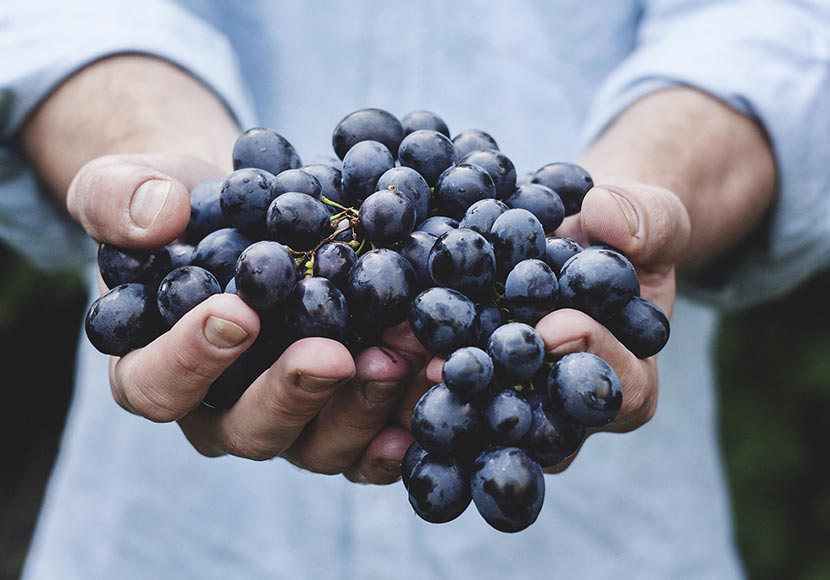
Petit Verdot is a late ripening grape, which has made it particularly challenging for grape growers in Bordeaux, which is a cooler region notorious for inconsistent weather and big variation between vintages. In warmer, more homogenous climates, such as central Spain, California, South America, and Australia (they have four times the plantings of France), Petit Verdot achieves a pleasant ripeness, balancing the aggressive tannin to create a full, rich wine.
The Tarija Valley in Bolivia has recently been found to hold this potential as well. Campos de Solana, the wine side of Casa Real, the country’s biggest producer of Singani (Bolivia’s national spirit), was the first winery to full embrace this thick-skinned beauty. Casa Real has a long history in Bolivia, but Campos de Solana is a relatively new project, having been born in the year 2000. Early on there was an attitude of experimentation, creating wines with varietals like Malbec, Tannat, Riesling, and of course Petit Verdot. Other wineries have begun testing out their own versions of Petit Verdot in most of the primary growing regions in Bolivia, so I expect to see more examples showing up in the near future.
Bolivian wines to try: Esther Ortíz Petit Verdot, Gran Reserva de la Familia, Campos de Solana
This wine is a perfect example of an almost forgotten French Varietal finding its New World voice. The grapes are grown at 2,000 meters (6,561 feet) above sea level in the Santa Ana Valley of Tarija, Bolivia. Here the grapes can achieve full ripeness in the warm climate and intense sun, while having a chance to rest and retain acidity during the cool mountain nights.
Nelson Sfarcich, head winemaker, saw great potential in this wine, so Campos decided to release it as a Gran Reserva with 24 months ageing in French oak, rounding out the fruit and floral aromas with elegant vanilla and spice character. This Gran Reserva was named after Esther Ortíz, the family matriarch. Though produced in limited quantity, the winery received plenty of recognition and respect, so no doubt we will see more Esther Ortíz, as well as other varietal Petit Verdot wines in the following years.
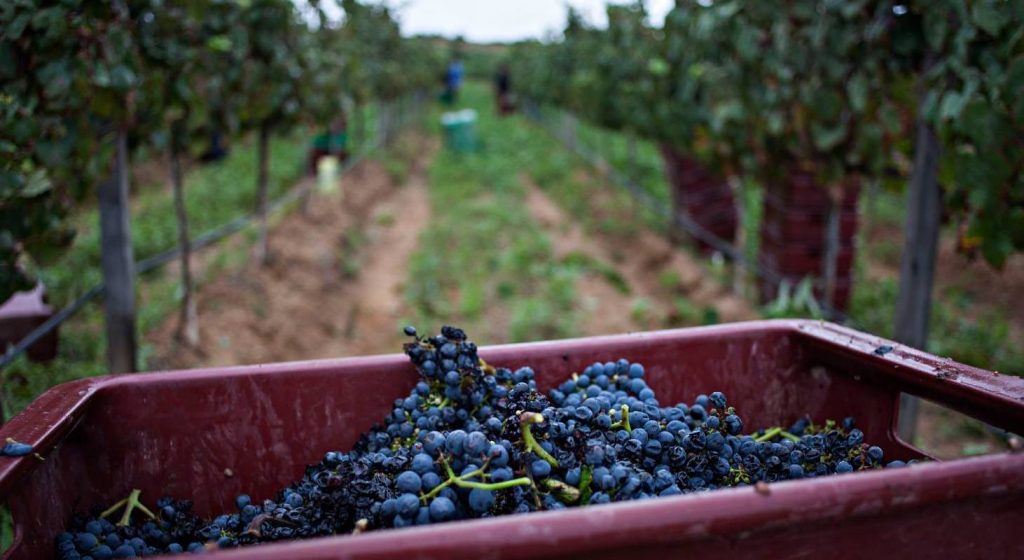
Marselan
Marselan is a newcomer to the wine scene, having been bred in the 1960s by ampelographer Paul Truel in France in order to create a vine that would produce high yields and medium berries. Marselan is a cross between Cabernet Sauvignon and Grenache, two widely planted and well-known vines, which was intended to be planted widely in the Languedoc region in France.
This region in Southern France can get quite hot, so the intention was to take advantage of the yield and heat tolerance of Grenache, while maintaining some of the finesse and elegance of Cabernet Sauvignon. Though this vine was not ultimately planted much in France, it has been finding its voice in the New World, making its way to California, Uruguay, China and Brazil.
In 2006, Franz Molina of Bodegas y Viñedos Kuhlmann planted several varietals in their vineyards in Tarija, but he was most intrigued by Marselan. He had heard about the varietal while studying Enology in California. The varietal seemed to be picky about what combination of soil and aspect it desired, but the vines were producing grapes of great concentration. Franz notes that Marselan shows off the best of its parent varietals, with lots of rich, dark fruits, earthy character, cacao, and very little of the green pepper pyrazine character that Cabernet is known for (which some people find off-putting in large doses).
Very little Marselan has been planted in Bolivia, but that is likely to change now that Franz has brought attention to the varietal. Their family has approximately 14 hectares in total between their Sunchu Huayco vineyard in Tarija located at 2,000 meters (6,561 feet) and the recently planted vineyard in the Cinti Valley at about 2,400 meters (7,874 feet). As of yet, there are no other plantings of Marselan, but with the success of Gran Patrono, we will undoubtedly see more planted soon.
Recommended Bolivian wine to try: Gran Patrono Premium Reserve Marselan, Bodegas y Viñedos Kuhlmann, Tarija
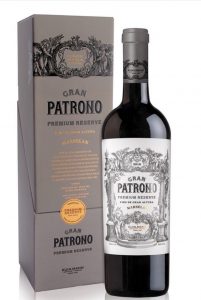
The grapes went through several selections to find only the finest bunches and berries and went through an extended cold soak to contribute lots of colour and aroma.
A limited quantity of wine was made and then set to age in new French oak barrels for 18 months, with a final 9 months in bottle. The resulting wine shows the split between its two parent vines, with notes of blackcurrant, pepper, chocolate, licorice, black cherry, and spices.
Vischoqueña
When one thinks of the most successful South American red wines a variety of French names come to mind: Carménère, Cabernet Sauvignon, Malbec, and so on. The beauty of South American wines is not limited to these Noble Varietals; there are other vines with much more history and a longer connection to the land. Vischoqueña (vees-cho-KEYN-ya) is a grape varietal found only in the Cinti Valley.

Very little information exists outside of the stories passed down from generation to generation by local winemakers. It is said that a stagecoach was travelling through the region, bringing with them special vines that were thought to be ideal for the area. The travellers arrived at the Vischoca River and attempted to cross, but the stagecoach flipped and the vines were spread by the river on to the banks. The vines began to produce in great abundance and were prized by the Spanish for their red grapes, which were small, juicy, thin-skinned, and aromatic. The varietal was named Vischoqueña in honour of town and river at which they arrived.
Cuttings of these vines were eventually taken to the Cinti Valley, the primary winemaking region of the time. The Vischoqueña vine can be traced in the valley back to the late 1800s, and there are still vineyards that exist with vines that are at least as old.
One producer sent samples to Portugal to have the DNA mapped. This identified Vischoqueña as a crossing between Muscat of Alexandria and an unknown red varietal brought by the Spanish (most likely the Mission grape). These grapes have the aromatic intensity of Muscat, but it produces peculiar, inconsistent bunches of grapes, occasionally with a mix of red and white grapes. These grapes are thin-skinned and therefore produce wines much lighter in colour, often times looking similar to a Pinot Noir, or even perhaps a dark rosé wine.
Traditionally this region produced Port-style wines, taking advantage of ripeness that could be achieved in this warm, high altitude region. Vischoqueña’s aromatic juice would be fermented and then, while still sweet, fortified with the local brandy, creating highly aromatic, sweet, potent wines that wouldn’t spoil as easily. This was important as all of the wine here was produced to fulfil the demand of the mining region located in Sucre and Potosí, a long, difficult journey by coach.
Today the wines of Vischoqueña vary in style, but are often light with high levels of acidity and express lots of fresh red fruits like strawberry, cranberry, and raspberry. This fruit is generally balanced by some elegant floral notes, which is to be expected for a varietal related to Muscat.
Some producers are beginning to produce fresh, vibrant rosé wines from this grape, and are finding that its delicate aromas, fresh fruit, and high acidity all contribute to making a complex, yet thirst quenching rosé. Only a few hectares of this varietal are planted in all of Bolivia, but there are some small plots of vines that are over 100 years old, contributing to the aromatic complexity of the wines. Fortunately, producers in the area have worked for several years to define a Geographic Indication (GI) for the Cinti Valley, which defines Vischoqueña as one of the three traditional grape varietals of the area. This will help prevent growers from deciding to rip up traditional vines in an effort to plant purely noble varietals or more internationally recognized grapes.
Bolivian wine to try: Tradición Cinteña Vischoqueña, Cepa de Oro, Cinti Valley
Jaime André Rivera is the 4th generation winemaker and owner of Cepa de Oro (grapes of gold) was handed down all of his winemaking and viticultural knowledge by his father and his grandfather. Growing up in the Cinti Valley, he has seen many changes in the landscape and economy, from the hyperinflation in Bolivia during the 1980s, and to the growth of Tarija as a winemaking centre.
Many local producers have closed their wineries or have planted other crops in order to survive, but Jaime did not want to give up on his family’s tradition. He worked with local authorities to establish the GI for the Cinti Valley and worked with his father to continue to plant the three traditional Criolla varietals, Muscat of Alexandria, Mission (Negra Criolla), and Vischoqueña.
His great grandfather was the owner of the San Roque vineyard, the oldest known vineyard in Bolivia still in production. Here, and in his own property, these three traditional varietals are trained up pink peppercorn (Molle) and Chañar trees, a method brought by the Spanish to help the vines handle the summer rains and unique terroir. He has the privilege of working with vines that are thought to be up to 200 years old, allowing him to create wines with tradition and complexity.
The Tradición Cinteña Vischoqueña is light in colour and delicate in tannin. On the palate, it is juicy and refreshing, while complex and elegant. Rose and violet balance the big dose of fresh red fruits like strawberry, cranberry, and Rainier cherry. This wine is a great match for dishes like the local favourite of grilled river fish or even traditional oven-roasted pork.
Negra Criolla
As the Spanish empire expanded, so did the reach of wine. There is no grape more closely associated with this expansion than the Mission grape (aka. Negra Criolla, Criolla Chica, Pais). As the name implies, missionaries planted this grape in order to make sacramental wines, as well as table and fortified wines for general consumption. DNA tests have identified these grapes as being identical to that of Listán Prieto, a grape varietal that is used to make wine in the Canary Islands. This grape received many different names as it spread throughout the New World: Mission, Misionera, Criolla, Negra Criolla, and País are just a few examples.
These vines represented most of the plantings in North and South America until immigrants began diversifying by bringing their favourite European varietals from the 19th century onwards. To this day Chile, Argentina, Peru and Bolivia still have significant plantings, and producers are attempting to give value to this traditional varietal. The Negra Criolla grape spread so far and wide because it is a durable, adaptable and productive grape, producing high yields of fruit in almost any condition. In Bolivia, this vine adapted to the high altitude, producing large bunches with small grapes; though if the yield is not controlled the grapes will often to produce bland, uninteresting wine.
Many old vines still exist in the Cinti Valley in Bolivia, at an average elevation of 2,350 meters (7,709 feet). Some properties still have century old vines trained up a variety of trees, producing lower yields of fruit with greater concentration and character. Winemakers are finding that they can get greater depth and concentration from these vines, and the resulting wines show great potential.
Negra Criolla, in general, produces smaller grapes, but they are thin-skinned and make wines that are lighter in colour. Producers in Cinti help concentrate flavour and colour by dropping bunches early in the season, allowing the vines to focus their energy on fewer clusters. Jaime André Ribera of Cepa de Oro finds that Negra Criolla vines grown high in arbours or in trees producer better fruit than those grown in modern trellising systems. Like Vischoqueña, Negra Criolla is included in the Cinti Valley GI, which will go a long way to preserving these old vines while by encouraging winemakers to embrace their heritage by investing their efforts in this all too often ignored varietal.
Bolivian wine recommendation: Tradición Cinteña Misionera, Cepa de Oro, Cinti Valley
Like the Vischoqueña made by Cepa de Oro, this Negra Criolla (Misionera wine) follows the recently established Geographic Indication for the Cinti Valley. This wine is made with fruit from the San Roque vineyard, originally owned by Jaime’s great-grandfather, where most of the vines are well over 100 years old.
This wine shows the complexity and concentration of the old vines with an earthy, dried-leaf quality, but still maintains a light-hearted balance of fresh acidity, light tannin, bright red fruit, and a touch of floral character. This wine will pair up nicely with a roasted chicken, baked root vegetables topped with goat’s cheese, or a salty cured ham and cheese board with some dried fruits. Feel free to take this wine seriously, or chill it down a few degrees and take it out to the patio on a warm fall day.
By Darren Armstrong
 Darren Armstrong spent over 15 years working in the hospitality industry through the United States and Europe, concentrating in Front of House, wine service and education, and mindful drinking.
Darren Armstrong spent over 15 years working in the hospitality industry through the United States and Europe, concentrating in Front of House, wine service and education, and mindful drinking.